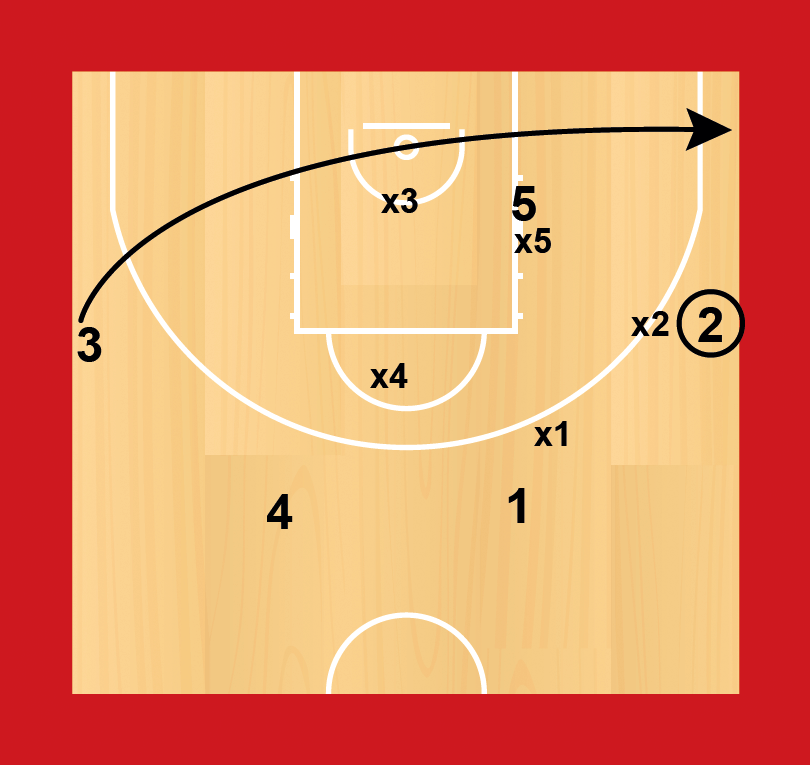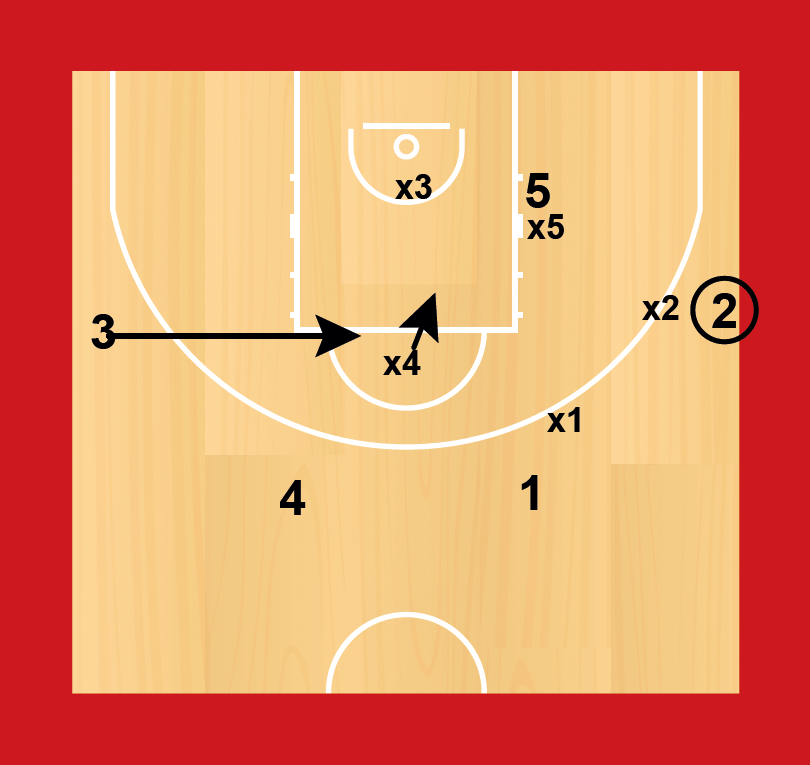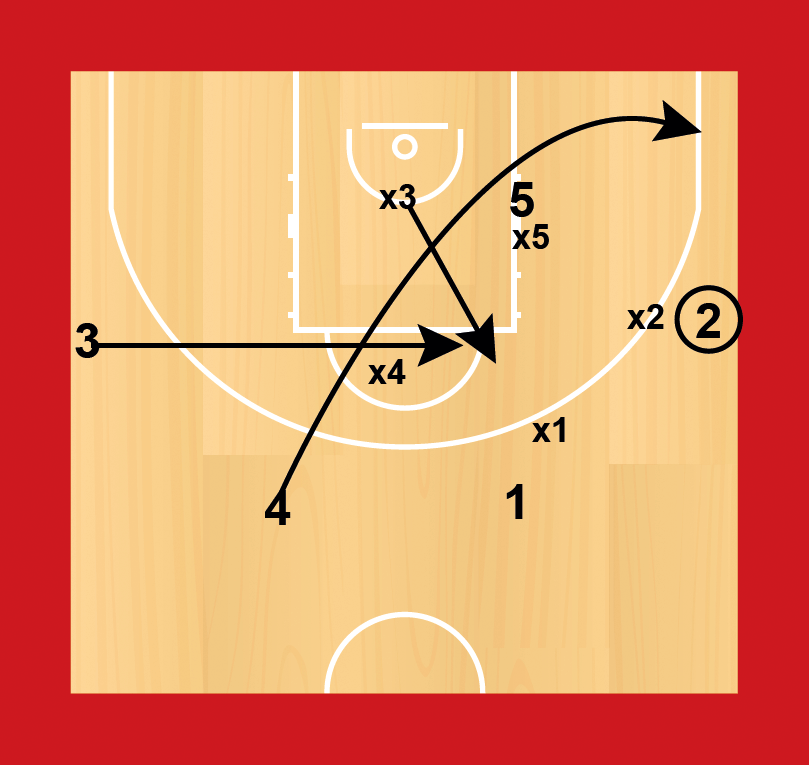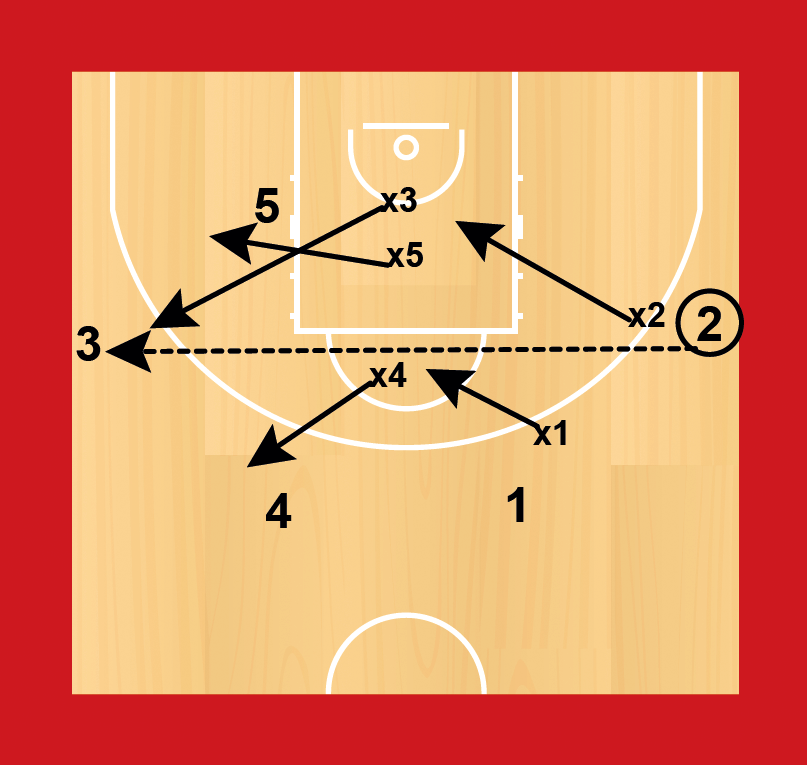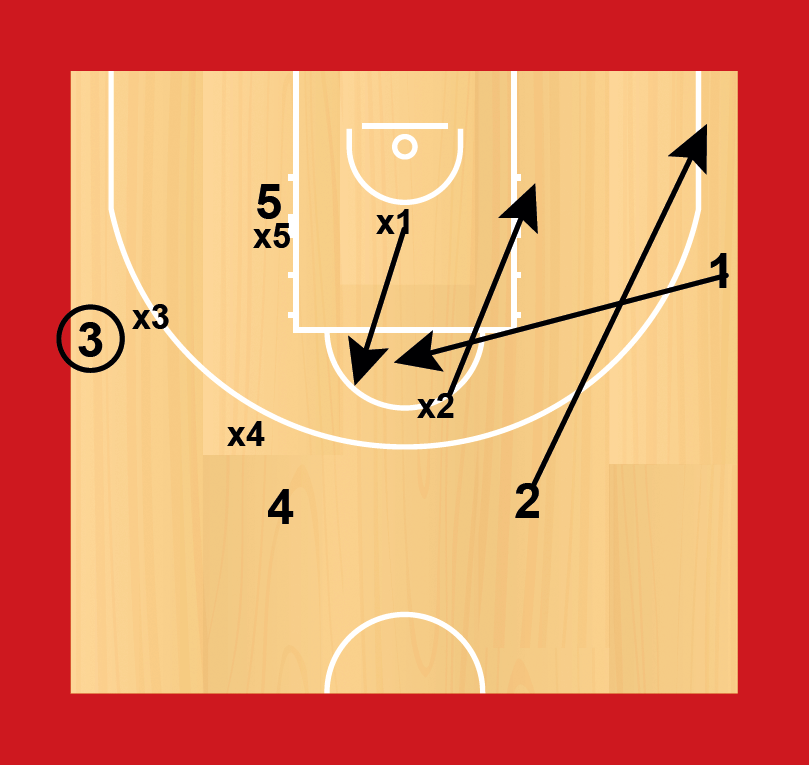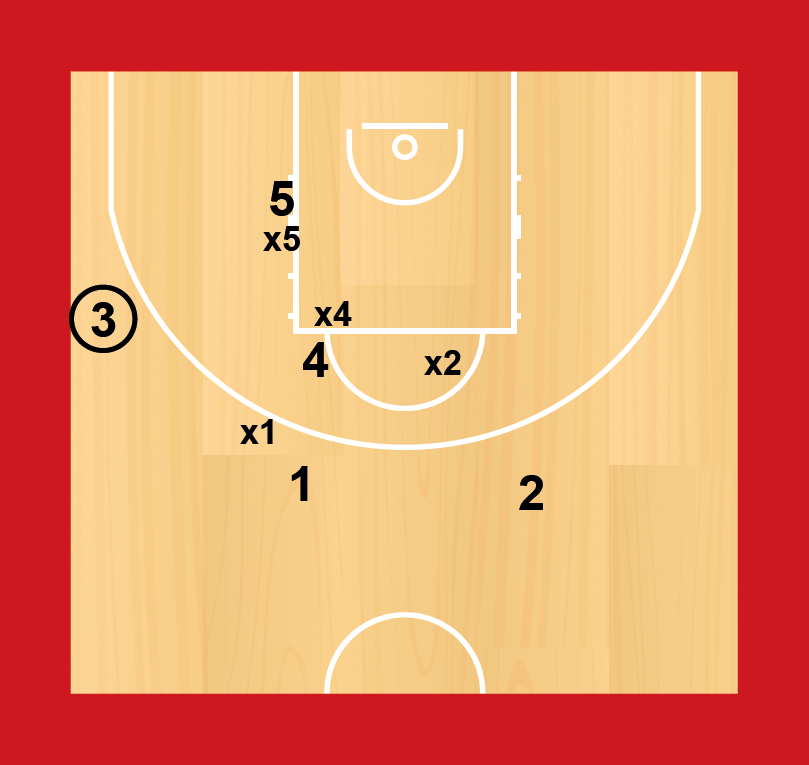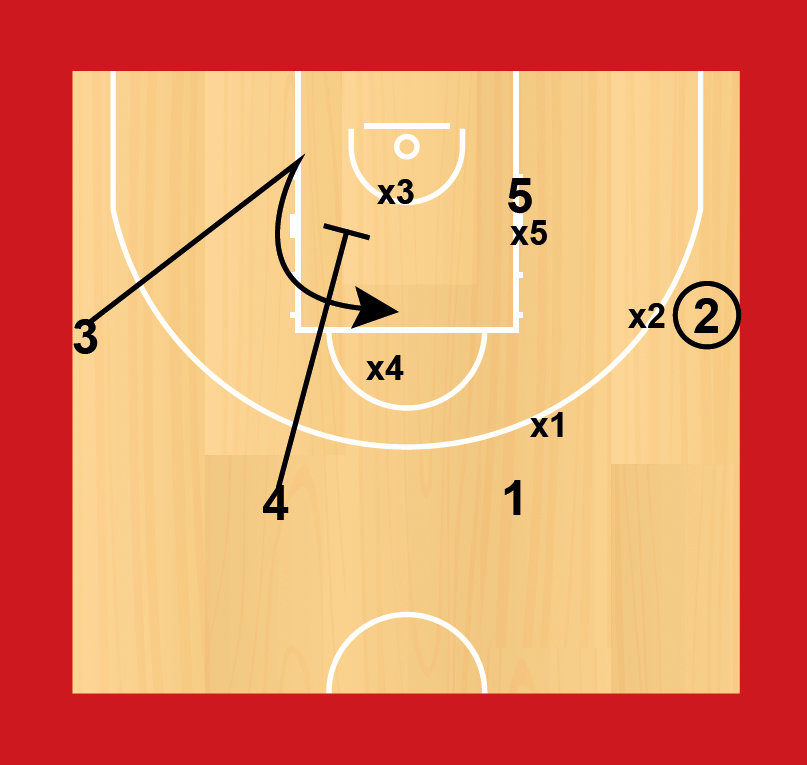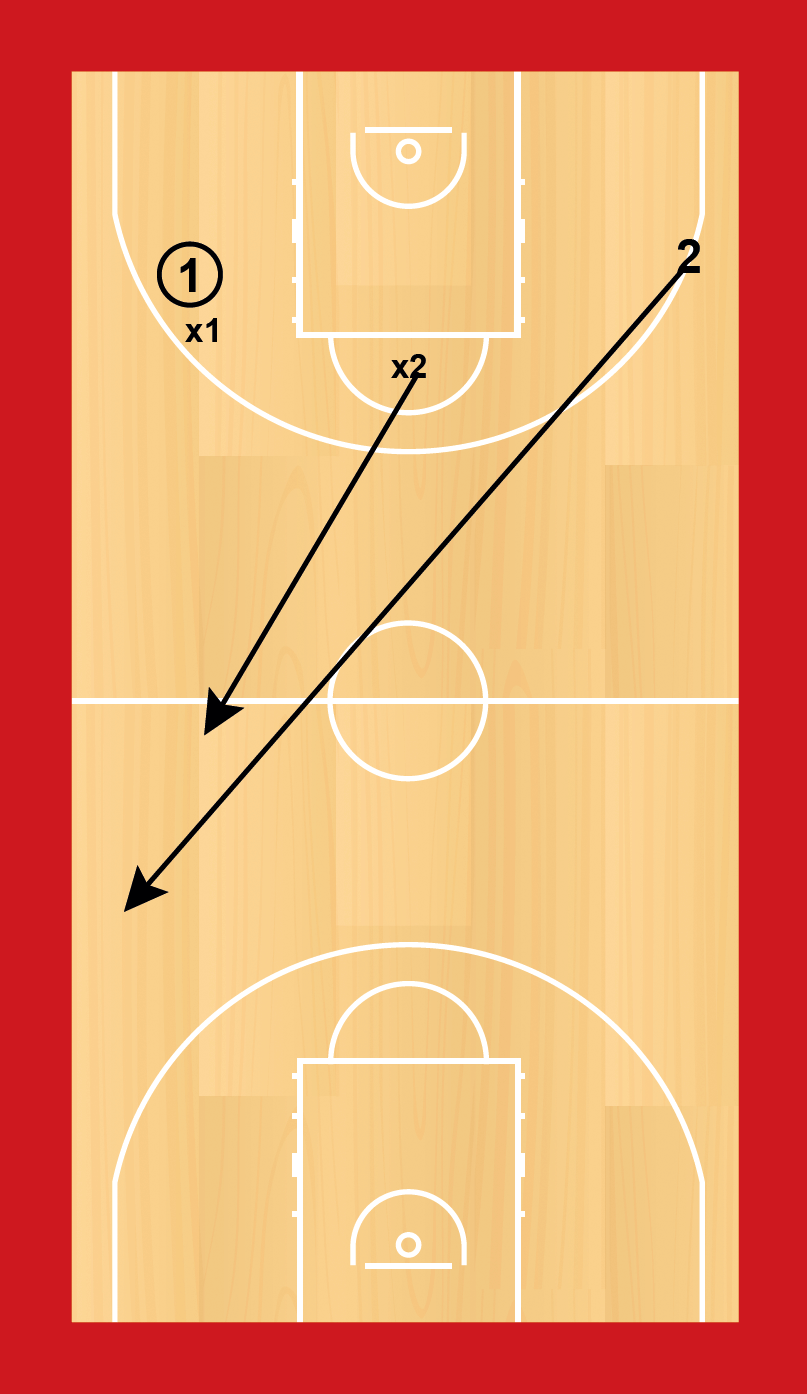Level 2
2.1.7 Moving the help defender away from a help position
Moving Help Defender
In many situations basketball is not a 1v1 contest, with “help” defence designed to place added pressure on the offensive players (before they make any move) and to also provide help to a defensive team mate. Whether the defensive is double teaming, switching or rotating the effect is that “help” defence can stifle offensive opportunities.
Accordingly, offensive movement is often designed not to directly create a scoring opportunity but to move help defenders to relieve pressure and/or create an opportunity for a 1v1 contest.
x3 is in the low “split line” position explicitly to be able to help other defenders. They may both help to defend the low post player (double teaming, intercepting a lob pass) and may also help to defend dribble penetration.
As 3 cuts to the ball side corner, x3 must now make a decision. If they remain on the split line, 3 will be open. If they move to defend 3 in the corner, they are no longer in a position to help against the low post player.
By reversing the ball from one side of the court to the other, the offence force the defensive players to adjust position. This can create a situation where help defence has not got into position when the pass is made.
Some teams will opt to move away from the split line to provide better coverage against good shooters. If the offence know that this is part of the defensive scheme, they can move the shooter so that the defence are no longer in a help position.
Here, 2 is an excellent shooter and when they cut to the corner, x2 will not adopt a split line position but will hedge towards the corner. 1 cuts to the free throw line to draw x1, and then there is no split line defender behind 5.
If x1 stays then 1 is open at the free throw area.
Having a high post player (particularly if they are also ball side) creates an offensive alignment that does not have an easy low split line defender.
Screening action can also be used to move the split line defenders. As 4 sets a down screen for 3, x3 and x4 will adjust position to defend the screen, which may divert their attention from (or cause confusion regarding) help line responsibility.
In a full court context, x2 is able to pressure 1’s dribble (hedge and recover or “run and jump”) and is also in a position to double team.
However, when 2 cuts it will move x2 from this position. 2’s cut is most effective if it moves to the ball side as this draws x2 away from the split line.
